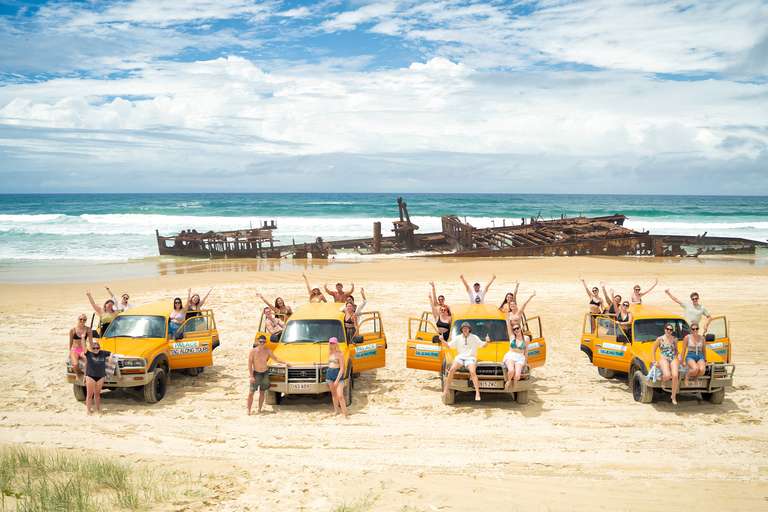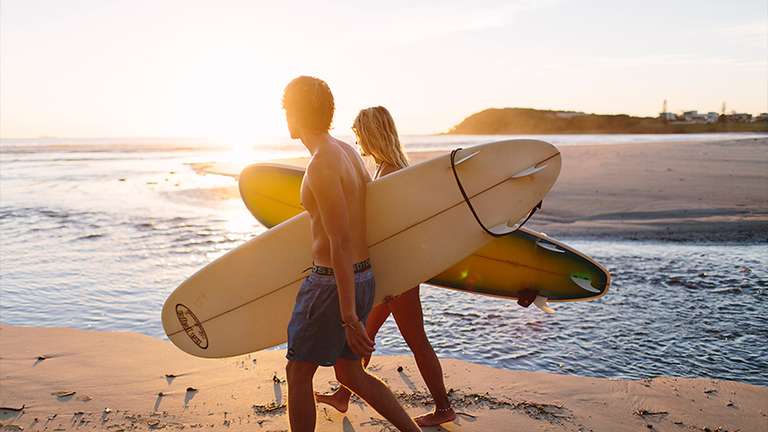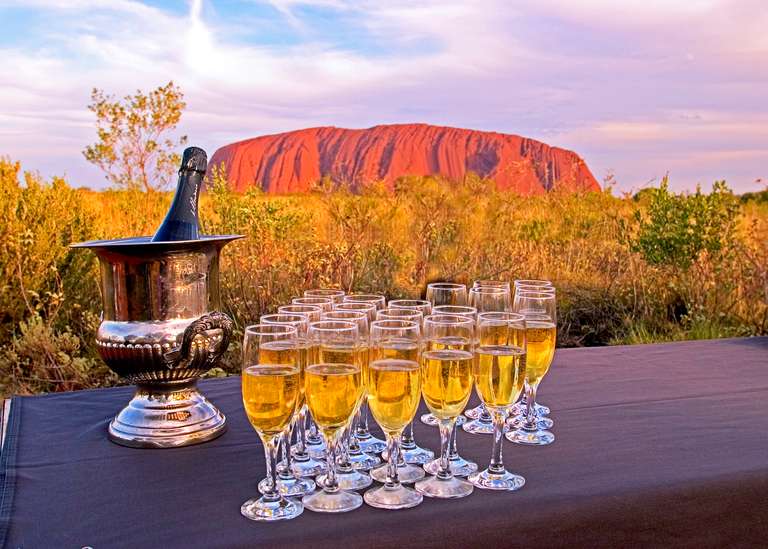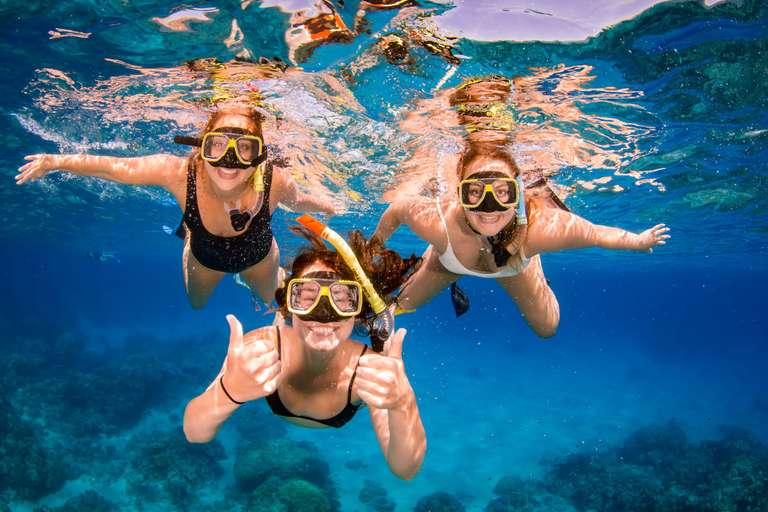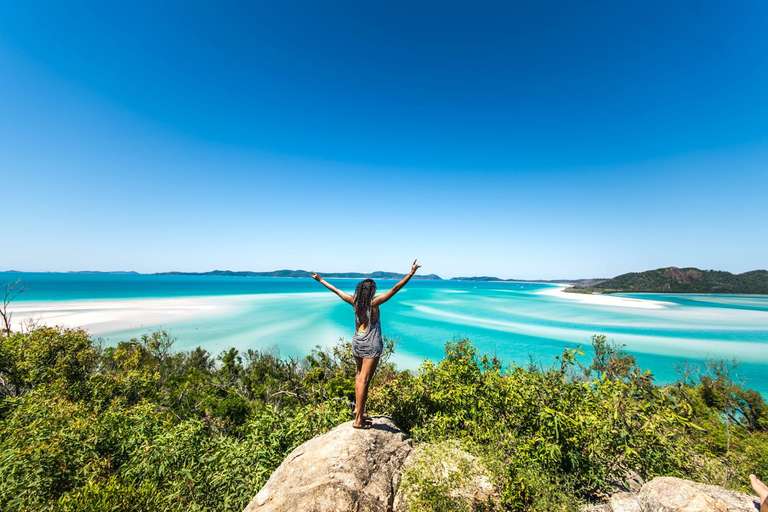6 Best National Parks in Australia to Visit

- Rosario Maria Gagliano
- From Italy
- Rosario Maria Gagliano
- From Italy
- Heather M
- From
- Christopher H
- From

Famous for its Bungle Bungle Range, the striking scenery at this UNESCO World Heritage site makes Purnululu a truly unique destination. Ancient sandstone domes with unusual beehive shapes stand tall with stunning orange and black bands of color. The majestic geographical wonders are a perfect backdrop for inspiring walks, captivating photography and adventuring through Australia’s wilderness.
Highlights
- Wander around a one-of-a-kind landscape with breathtaking natural pools and gorges
- Fly over the range in a helicopter for impressive long-range views
- Test the acoustics while singing in the natural amphitheater of Cathedral Gorge
Lowlights
- The park is only accessible during the dry season, along a 57 km road requiring a 4x4 vehicle
- Some walks through the park may be difficult and require overnight camping
- With a lack of marked trails, hikers should be confident with navigation skills
Purnululu National Park facts
| Size | 3,120 square kilometers |
| Location | Western Australia, south of Kununurra |
| Common wildlife sightings | Wallabies, wallaroos, echidnas, rare birds, including the Gouldian Finch, monitors, skinks, lizards, pythons, bats, fish, frogs |
| Best time to visit | Dry season (April through December), as other times the park may be closed |
| Nearby attractions | Piccaninny Creek, Kungkalanayi Lookout, Cathedral Gorge, Homestead Gorge, Whip Snake Gorge, Northern Escarpment Walk, Mini Palms Walk, Echidna Chasm Walk, the Domes Walk |
| Accommodation | Primitive camping at Kurrajong and Walardi campgrounds; powered sites at Bungle Bungle Caravan Park; stylish glamping compound at Bungle Bungle Wilderness |
| Possible activities | Hiking, canoeing, snorkeling, rafting, cycling, surfing, scenic drives |
2. Great Otway National Park
From breathtaking coastal cliffs and pristine beaches to cool lush rainforests and refreshing waterfalls, Great Otway National Park offers a wonderfully varied landscape. A true haven for outdoor enthusiasts, the national park lies en-route the Great Ocean Road which starts in Torquay and ends at Allansford and is a great stop.
Highlights
- A well-rounded destination with a dramatically varied landscape and iconic views
- A designated Important Bird Area
- Walk the giant redwood forest, through historic fern gullies or over treetop bridges
- Rejuvenate in a grand oasis of waterfalls
Lowlights
- Downpours and a wet terrain can make hikes difficult; pack proper gear
- Wintertime is colder, so parts of the park and nearby businesses may close
Great Otway National Park facts
| Size | 1,031 square kilometers |
| Location | Southern Victoria |
| Common wildlife sightings | Koalas, several species of rare birds, whales, dolphins |
| Best time to visit | December through February boasts vibrant lush scenery and warm temperatures perfect for outdoor adventuring. |
| Nearby attractions | Lighthouse Cape Otway, Melba Gully, Triplet Falls, Beachamp Falls, Carisbrook Falls, Hopetoun Falls, Lake Elizabeth, Great Ocean Walk, Madden’s Track Nature Trail, Otway Fly Treetop Park |
| Accommodation | Simple campgrounds at Aire River West, Blanket Bay, and Johanna Beach; caravan parking at Cape Otway Camping & Caravan Park; Rooms at Great Ocean Ecolodge, Glenaire Cottages |
| Possible activities | Hiking, kayaking, snorkeling, cycling, surfing, scenic drives, fishing |
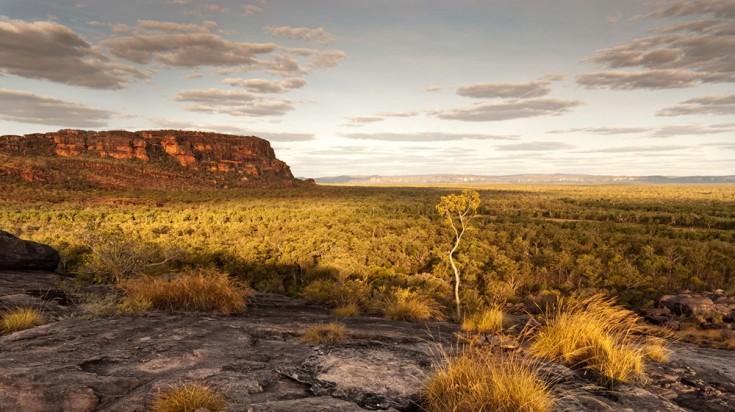
Home to over 2,000 species and plants of wildlife, this park is well-known for its impressive and unique biodiversity. The landscape includes sandstone geological formations, wetlands, and rivers making it a perfect destination for wildlife viewing. Recognized as a World Heritage Site, the park is rich in Aboriginal history and visitors can get a glimpse of the area’s cultural past.
Highlights
- Spot one of the 10,000+ crocs from the platforms of Cahills Crossing and Yellow Water
- View prehistoric Aboriginal rock paintings at Nourlangie, Nanguluwur, and Ubirr
- Immerse yourself in the history of Kakadu on a cultural boat cruise through the scenic East Alligator River
Lowlights
- Some organized tours may be crowded
- Hot, humid weather is common. Bring plenty of water when adventuring out
Kakadu National Park facts
| Size | 19,804 square kilometers |
| Location | Jabiru, Northern Territory |
| Common wildlife sightings | Birds, crocodiles, rare Leichardt’s grasshoppers, quolls, flatback turtles |
| Best time to visit | June to August, as the majority of sites are open and the weather is drier and cooler |
| Nearby attractions | Ubir, Gunlom, Nourlangie, Maguk,, Yellow Water, Gubarra, Boulder Creek, Motor Car Falls, Cahills Crossing, Nanguluwur |
| Accommodation | Primitive camping in the savanna woodlands of Alligator Billabong Campground or many other nearby campgrounds, caravan at Kakadu Lodge and Caravan Park, glamp at Hawk Dreaming Wilderness Lodge, or book a room in one of several nearby lodges and hotels |
| Possible activities | Fishing, boating, birdwatching, swimming, bushwalks, hiking, cultural tours, art walks |
4. Uluru Kata-Tjuta National Park

Recognized as a UNESCO World Heritage Site, this park is a real gem in the Australian outback. This 600 million years old monolith tops the list of best places to visit in Australia. Uluru Kata-Tjuta National Park offers visitors spectacular scenery and rich experiences. Watch the sunrise over the massive monolith of Uluru Rock, dip in delicious swimming holes and learn about the rich culture and history of the local Aboriginal tribe on guided bushwalks.
Highlights
- Surround yourself with an unrivaled landscape in the outback with gorgeous geographical formations
- Immerse in the culture, art, and history of one of the oldest human societies in the world
- Enjoy mouth-watering BBQs as you camp or glamp in wilderness
Lowlights
- Organized tours are popular and may be crowded at times
- Flies and mosquitos can be bothersome. Bring netting.
Uluru Kata-Tjuta National Park facts
| Size | 1,326 square kilometers |
| Location | Northern Territory, in Australia’s “Red Center” |
| Common wildlife sightings | Wallaby, kangaroo, emu, possum, rabbit, lizards, python |
| Best time to visit | May through September offers cooler weather for enjoyable walks. Plus, the colors of Uluru are more vibrant and wildlife more active this time of year. |
| Nearby attractions | May through September offers cooler weather for enjoyable walks. Plus, the colors of Uluru are more vibrant and wildlife more active this time of year. |
| Accommodation | Campgrounds and caravan parks at Ayers Rock Campground and Curtin Wayside Inn & Springs; multiple budget and boutique lodging options available at Ayers Rock Resort; all-inclusive luxury lodge at Longitude 131. |
| Possible activities | Bushwalks, swimming, climbing, cultural tours, art walks, culinary tours, camel treks, scenic helicopter rides |
5. Karijini National Park
Australia’s second largest park, Karijini rewards visitors with geological beauty, vast scenic landscapes, and diverse ecosystems full of wildlife and wildflowers. During the day, navigate your way through rock tunnels or dip in enticing rock pools. At night, relax at camp gazing at the stars.
Highlights
- Follow the walking trail along the top of the gorge to Oxer Lookout
- Take a refreshing swim in the pristine natural pool at Fortescue Falls
- Glamp in the rugged landscape of the outback at Karijini Eco Retreat
Lowlights
- Yampire and Wittenoom Gorges contain blue asbestos. There is a risk of cancer caused by inhaling asbestos dust.
- Flashfloods can occur in the gorges after heavy rainfall. If rain is present, do not enter the gorges
Karijini National Park facts
| Size | 6,274 square kilometers |
| Location | Hamersley Range in Western Australia |
| Common wildlife sightings | Rare species of birds, red kangaroos, euros, wallabies, echidnas, bats, dragons, lizards, pythons |
| Best time to visit | April through October, as there are severe thunderstorms and cyclones in the summer |
| Nearby attractions | Fortescue Falls Lookout, Dales Gorge, Weano Gorge, Kalamina Gorge, Joffre Falls Lookout, Knox Lookout, Oxer Lookout, Hancock Gorge, Mount Bruce, Hamersley Gorge |
| Accommodation | Primitive camping or fully-furnished glamping tents in the heart of Karijini at Karijini Eco Retreat; rooms at a handful of rooms and lodges in nearby Tom Price |
| Possible activities | Bushwalks, hiking, swimming, birdwatching, BBQ and picnics |
With the diverse offerings available in the many national parks of Australia, it may be difficult to decide where to start. With this list of the best national parks in Australia, any park you choose will provide you with exciting opportunities to enjoy Australia’s impressive natural sites, rare wildlife and fascinating history. No doubt, you will find yourself planning subsequent trips to soak in more of Australia’s great pleasures.
For more tours and booking in Australia, visit tours in Australia.

A must visit destination in Australia’s Northern Territory, Litchfield National Park is an outdoor paradise. With a collection of epic cascading waterfalls, crystal clear natural pools and fascinating ecosystems, you may find yourself planning an entire trip just in this spot. This park also hosts some unusual and iconic ecosystems.
Highlights
- Marvel at the unique phenomenon of the Magnetic Termite Mounds
- Discover the historic landmarks of Blythe Homestead and Bamboo Creek
- Wonder at the large collection of towering sandstone monoliths at the Lost City
- Cool off swimming through a number of cascading falls and deep pools
Lowlights
- Potential for crowds during dry season. While it is possible to visit during the wet season, many sites may be closed due to severe rains
Litchfield National Park facts
| Size | 1,458 square kilometers |
| Location | Southwest of Darwin in the Northern Territory |
| Common wildlife sightings | Kangaroo, wallaby, sugar gliders, possum, foxes, dingo, saltwater crocodiles, lizards, several species of birds |
| Best time to visit | Dry season (May through October) for best access to attractions and enjoyable weather |
| Nearby attractions | Florence Falls, Wangi Falls, Tolmer Falls, Buley Rockhole, Tjaynera Falls, Lost City |
| Accommodation | Several primitive campsites are available throughout Litchfield (permit required), camp or caravan at Litchfield Tourist & Van Park or Banyan Tree Caravan Park, rooms and bungalows available at several lodges and resorts just outside the park. |
| Possible activities | Bushwalks, hiking, swimming, wildlife spotting, scenic helicopter rides |




